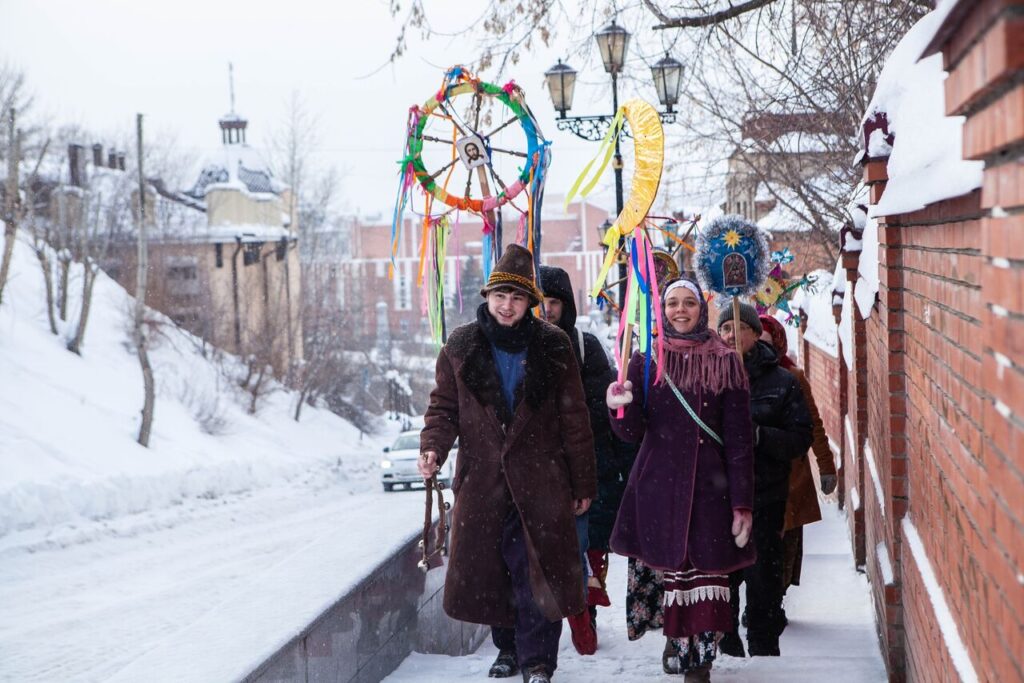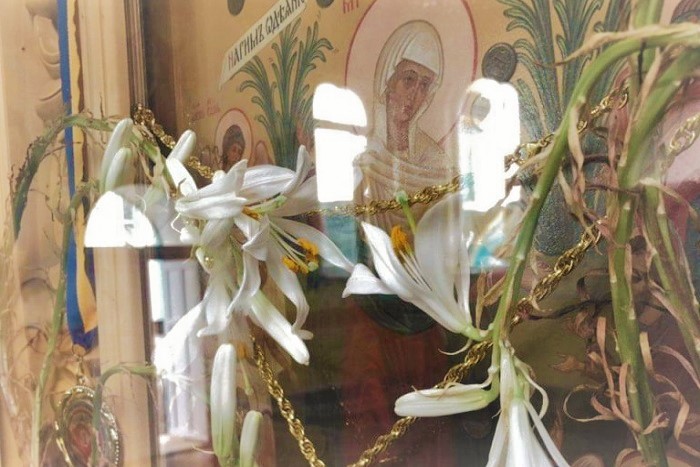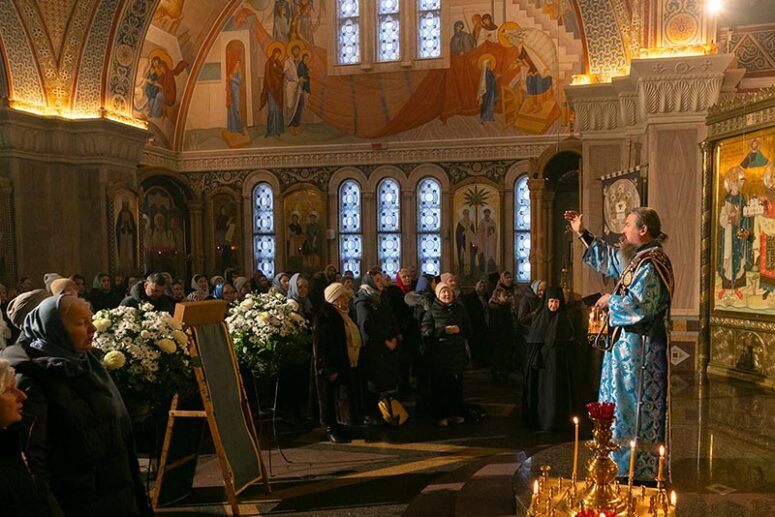
The Introduction of the Symbol of Faith during the Divine Liturgy and Its Purpose
To unravel the intricacies of why the Symbol of Faith, or Creed, is sung during the Divine Liturgy, a journey through history becomes essential. In the relentless battle against paganism and heresies, the Apostles and Church Fathers strategically repurposed pagan or heretical elements, infusing them with Orthodox significance. Often, this strategy was driven by the need to articulate Christian concepts to the Hellenic world—individuals steeped in pagan ideologies—using a language familiar to them.
A noteworthy example is the use of the term “logos” (Greek for “word”) by the holy apostle and evangelist John the Theologian in the Gospel: “In the beginning was the Word, and the Word was with God, and the Word was God” (John 1:1). The term “logos” had its origins in the teachings of the ancient philosopher Heraclitus. In ancient philosophy, closely intertwined with the pagan beliefs of ancient Greeks, logos represented a cosmic force fostering a harmonious unity in the world. To ancient philosophers, logos symbolized a universal order, a framework within which everything underwent flux and change yet remaining true to its essence. Essentially, the ancient philosophers perceived Logos as a sacred, albeit perhaps impersonal, divine force. The holy apostle and evangelist John the Theologian employed the term “Logos,” reshaping and infusing it with Christian meaning. In the opening verses of his Gospel, he engaged in what seemed like a dialogue with the pagan world, affirming, “Yes, all things came into being through Logos. However, Logos is not impersonal. God is a Person—He is the Father, the Son, and the Holy Spirit. The Second Person of the Holy Trinity, God the Son, our Lord Jesus Christ, is the Logos.” In this manner, St John communicated the message of Christ to the entire oikoumene—the universe—in a language intelligible to the ancient world.
A parallel adaptation is seen in the case of Greek names, such as the male name Demetrius and the female name Muse. Originally, the name Demetrius meant “dedicated to the goddess Demeter,” with Demeter being the “goddess” of fertility and the earth in Hellenic pagan religion. The Muses, female deities inspiring artistic talents, were also part of the pagan pantheon. However, in the early fourth century, a man named Demetrius in the Greek city of Thessalonica sacrificed his life for Christ (the Holy Great Martyr Demetrius of Thessalonica). Similarly, in fifth-century Rome, a blessed girl named Muse devoted herself to serving the Saviour and the Blessed Virgin Mary. The Church embraced these names, transforming them into Christian identities cleansed by the blood and devotion of saints, purging them of their pagan associations and imbuing them with Christian significance.
A comparable evolution unfolded in the case of antiphonal singing. Gnostic heretics employed this style in their worship services for its aesthetic appeal. To counteract the pernicious teachings of the Gnostics, the Church incorporated antiphonal singing into its services, repurposing this musical form with Orthodox content.
The inclusion of the Symbol of Faith (Creed) in the Liturgy, a doctrinal statement formulated by the holy fathers of the First and Second Ecumenical Councils in the fourth century, traces its roots to the catechetical instruction of doctrinal truths for catechumens prior to their Baptism. While the Creed was authored in the fourth century, its formal integration into liturgical practices occurred almost a century later.
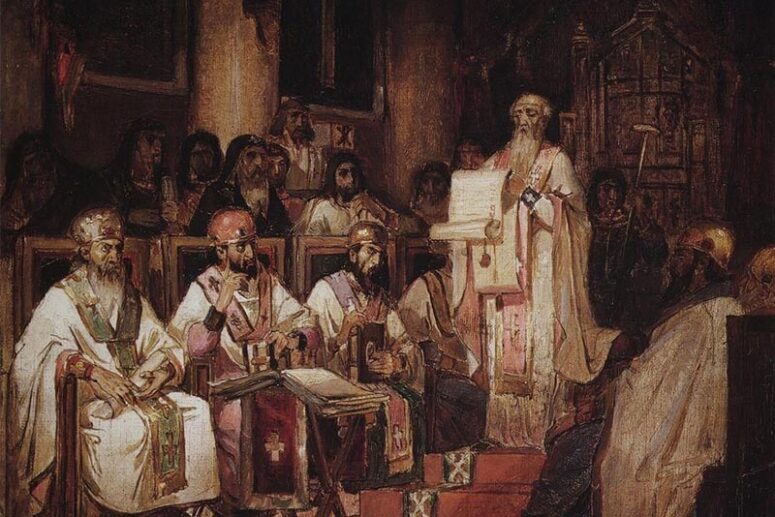
Two key historical figures are associated with this integration: Peter the Fuller, Patriarch of Antioch, and Patriarch Timothy I of Constantinople.
Peter the Fuller, serving as the Patriarch of the Antiochian Church in the latter half of the fifth century, held monophysite beliefs, emphasizing the Divine nature of Christ to the exclusion of His humanity. Despite his heretical stance, Peter introduced the Nicene Creed into the Liturgy, the very Creed recognized by Orthodox tradition without any alteration or distortion. While Peter the Fuller and his teachings were later condemned by the Sixth Ecumenical Council, the tradition of using the unaltered Nicene Creed in Orthodox worship persisted.
Patriarch Timothy I, leading the Church of Constantinople in the early sixth century, is the second figure associated with the Creed’s introduction into liturgical practice. Although not an overt heretic, Timothy displayed sympathies towards the Monophysites. In an attempt to align with Monophysite practices, he sought to introduce the singing of the “Trisagion” with the addition “crucified for us” in the Hagia Sophia Cathedral, the primary church of the Constantinople Patriarchate. This triggered significant unrest and nearly led to the overthrow of Byzantine Emperor Anastasius.
To demonstrate his commitment to Orthodox doctrine, Patriarch Timothy opted to incorporate the Nicene Creed into the Liturgy, a move that served as a gesture of adherence to Orthodox beliefs during a time of theological tension.
The liturgical journey of the Church, shaped and refined through the intricate interplay of historical events and the guidance of the Holy Spirit, resembles the meticulous crafting of a precious diamond.
Returning to the inquiry “Why is the Creed sung in the Liturgy?” demands a thoughtful examination of its placement in the Divine service. The Creed takes center stage just before the Eucharistic Canon, following the cherubic song that urges the faithful to cast away earthly concerns. It stands as the prelude to the profound mystery where the grace of the Holy Spirit descends, transforming bread, wine, and water into the Body and Blood of Christ. The question arises: why does the Creed occupy this particular position?
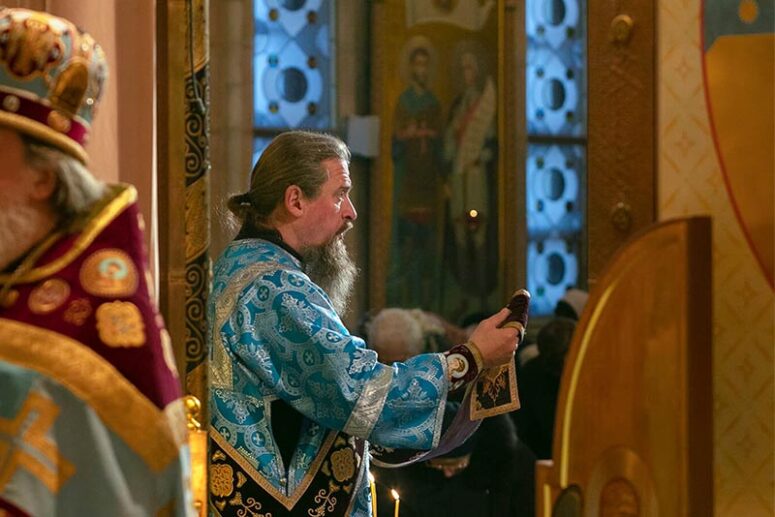
The Creed, in this context, serves as a profound testimony. Through its singing, we declare before the Triune God—Father, Son, and Holy Spirit—that we are not pagans, heretics, or schismatics. Instead, we affirm our identity as Orthodox Christians, faithfully safeguarding the purity of Orthodox faith and its sacred dogmas. This testimony acts as a key, unlocking the gates of heaven, allowing the grace of God to descend upon our offerings and orchestrate the sacramental transformation within them.
The tradition of singing the Creed during the Liturgy, as opposed to its recitation, underwent a notable shift in the liturgical practices of the Greek and Russian Orthodox Churches. While initially recited, particularly in Russia until the mid-nineteenth century, a gradual transformation toward sung recitation emerged.
This evolution was marked by considerable debate, eventually leading to the prevalence of singing the Creed. It’s noteworthy that the combined singing of the Creed and the Our Father prayers by the congregation was introduced by His Holiness Patriarch Alexis I—a positive change fostering a sense of unity among the faithful. This shift aligns with the practices of the early Christians, fostering a communal spirit within the Church.
Beyond its communal nature, singing the Creed has a profound impact on worshippers. It transforms the soul into a musical instrument in the hands of the Lord. Through this melodic expression of faith, individuals sense that they are not alone but are integral parts of the Body of Christ—the one Holy Catholic and Apostolic Church. This musical proclamation enhances the conciliarity of the Church, uniting believers with one voice in the profession of the Orthodox faith.
In the intricate tapestry of the Orthodox Liturgy, the singing of the Creed unfolds with symbolic gestures and profound rituals.
The proclamation preceding the Creed, “The doors, the doors; in wisdom let us attend,” carries historical echoes and contemporary symbolism. Originally linked to practical duties, such as safeguarding the service from disruptions and ensuring only baptized Orthodox Christians remained inside the church, it now calls the faithful to guard their minds and hearts against external distractions.
During the chanting of the Creed, two significant actions transpire within the altar. Firstly, the veil behind the Holy Doors is opened, symbolizing the rolling away of the stone from the Holy Sepulchre during the Resurrection. Secondly, the priest waves the aer (veil) over the Gifts—Lamb on the paten and Chalice with wine and water. This act symbolizes the unveiling of Divine Wisdom through the correct profession of faith in the dogmas of the Creed.
The swaying of the aer holds additional layers of symbolism. It mirrors the air’s movement preceding the descent of the Holy Spirit upon the Apostles, and it signifies the earthquake at the time of the Resurrection. Together, these actions envelop the congregation in the mystery of faith and Divine Wisdom.
Professing the dogmas of the Orthodox faith during the Creed becomes the gateway to profound mysteries. This heartfelt declaration opens the door to the Holy Spirit, making possible the miraculous transformation of bread, wine, and water into the Body and Blood of Christ. Through the Sacrament of Communion, believers enter a blissful communion with God, experiencing the Resurrection’s transformative power.
In this sacred act, sins are laid to rest, and the faithful are resurrected to eternal life. It is a journey into a fragrant paradise, an earthly manifestation of divine grace, facilitated by the Resurrection of Christ.
Translated by The Catalogue of Good Deeds
Source: https://pravlife.org/ru/content/pochemu-simvol-very-poetsya-na-liturgii


